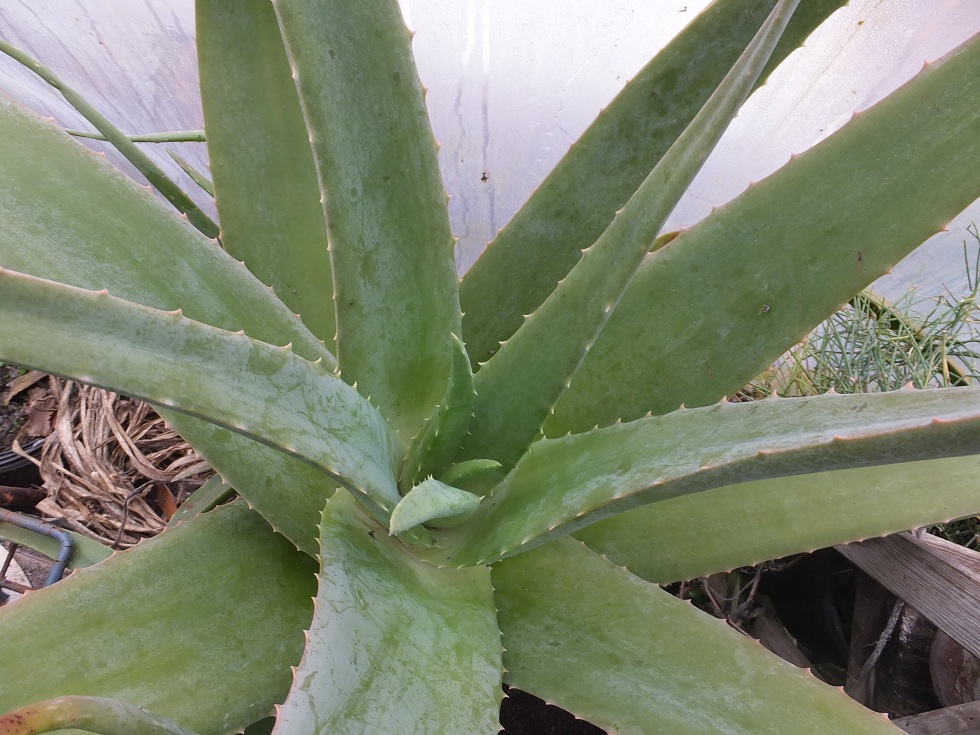Now here’s a greenhouse plant that takes almost no effort whatsoever. Or rather here are a great number of species as this is a big family and the curious collector can amass a large and interesting selection. Mostly from southern Africa these are succulent plants which although slow growing at first soon become large specimens with great architectural merit. Much resembling, and often confused with, the Agaves the Aloes generally have none or much less vicious thorns along the edges of their plump sword shaped leaves. Their flowering is also much less spectacular though more frequent. Agaves may eventually throw up an incredible thirty foot spire of blooms, but then die. Aloes have much more modest spikes, repeatedly, with quite showy flowers in reds and yellows much like the red-hot pokers of Kniphofias, indeed some varieties resemble Kniphofias but with fewer plumper leaves. Aloes also differ in usually developing a woody, though not very substantial, stem.

One species we may easily come across is the striped Aloe variegata, Partridge breasted or Tiger aloe, usually seen as a low maintenance house plant for a sunny windowsill. Another, and the most useful by far, is Aloe vera, also known as the Barbados aloe. This was the species most used to produce bitter aloes, a brown gum with medicinal use (most species have similar properties).
Aloe vera is now frequently seen on kitchen windowsills where it’s grown for handy natural first aid. The juicy translucent jelly inside the snappable leaves is glutinous and soothing and especially effective for treating burns. This soothing extract is sold commercially and added to sun creams, cosmetics and even toilet paper. Some eat or drink the liquidised jelly and chunks have even been pickled. (The yellow sap in the leaf skin is intensely bitter but the jelly is not.) Like most species Aloe vera is thought tender yet may well survive brief light frosts if also kept bone dry at the time. Apart from the obvious dangers from long hard frosts or gross over-watering during winter Aloes are tough, reliable, pest and disease free. Indeed Aloe vera is a remarkably good survivor and like most of the others very easy to propagate. You can start with seed but why as small plants are continually produced from near the base of larger ones and even a single leaf can take and start a new plant.
Most Aloe vera plants do remain quite small but only because of the small pot they have been confined in. Given a large tub of gritty well drained compost, such as a sandy loam enriched with leaf-mould, an Aloe vera can get to more than a metre across when the grey green leaves become quite imposing. Unfortunately because of the great utility of their jelly the leaves will probably be remorselesly taken off, from the bottom up, leaving an ugly bare stem. Luckily the plant can usually be re-potted with this bent around
and buried out of sight.


